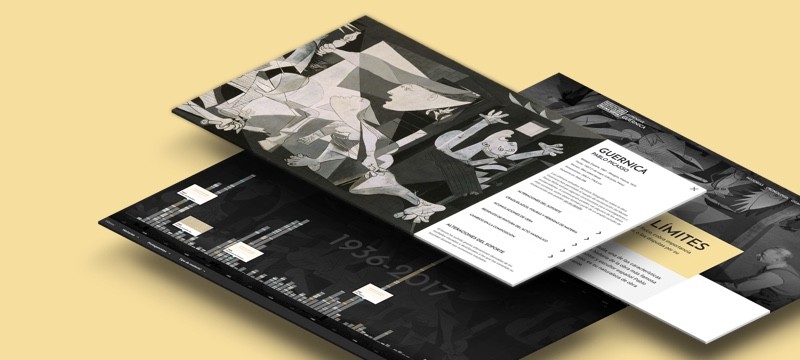They constituted proof of the artist’s technical adroitness in representing exemplary themes as he employed narrative, dramatic and compositional resources governed by the concepts of order, clarity and beauty. Yet Picasso did not touch upon a theme of the past or personalise his main personages, but instead subverted the very genre of history painting because he found a theme for his canvas in the present — the Spanish Civil War — and in an unheroic episode: the repeated bombings of Spanish cities and people. Thus, through Guernica Picasso considered the present as a historical event.
Guernica has been understood as a nod towards the major devices found in history painting.

How to look at a painting?
One of the factors to spark these debates was the immediate consideration of Guernica as a pure image filled with meaning; or rather, the consideration that each figure and element represented on the canvas responded to a specific motif or metaphor, giving rise to the need for new codes to decipher and study the painting which went beyond the limits of art history narratives. In this respect, along with interpretations of the painting within a Spanish Civil War framework, from a Marxist point of view there was an assertion that, owing to its allegorical nature, there was no alignment between language (figuratively, yes, but not academically speaking) and function (a propaganda message) in Guernica.
The pictorical language of Modernity
The context of war which formed the backdrop of the Guernica’s creation set forth a new pictorial language which was immediately seen to epitomise modernity, a setting of ruin and reconstruction. The painting can be found at the root of debates on abstraction and figuration, between interpretation and representation, which formed in the 1940s in the Americas and Europe. These debates predominantly took place among the artists, critics and historians who saw Guernica at the Paris World’s Fair in 1937, or at some of the international institutions that housed it in the years that followed.
Simplification through iconography
The results of studies on Guernica from historiographical movements and critical/political standpoints see these interests boil down to an iconographic reading. It is also worth noting Alfred H. Barr Jr.’s persistent attempts, from the Museum of Modern Art, in New York, and impelled by political pressure, the climate of war and the Cold War, to unravel the meaning of each figure represented in the piece in order to clarify its interpretation and, essentially, neutralise its political/symbolic potential. On 25 November 1947, a symposium was organised to provide an enduring explanation and to ensure the formulation of one sole reading.









